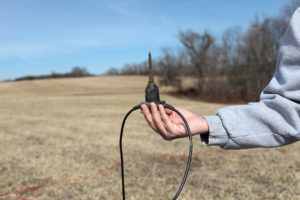All Categories
Featured
Table of Contents
What Is Geophysics? in Glen Forrest Aus 2021
Link with MBA programs looking for prospects like you. Study. Connect with master's programs around the country to get an edge over the competitors.

A geophysicist research studies numerous aspects of the earth. View a video to discover what a geophysicist: Geophysicists must make a minimum of a bachelor's degree; however, this is for an entry-level position.
Advanced degrees need more particular research studies in the specialized of choice. Task prospects are greater if you have a strong background in computer system science or innovation.
Geophysical And Geotechnical Assessment in Leda Aus 2022
Access to these chances may be limited depending upon where you live; however, internships or summertime programs with geophysical business, university geophysics department, or the U.S. Geological Study can be options. You can find a list of a list of opportunities on the United States Geological Survey (USGS) websites' Path Programs tab (opens in another link).
If you have yet to finish high school, taking as lots of science and math classes as possible would be a plus. Geophysicists also work with computers while investigating, so computer system courses can also be valuable, as pointed out previously in this post. Lots of geophysicists focus on a location of geophysics. The task description would alter pending on the specialty.
A geophysicist's tasks can consist of determining, tracking, and recording data from numerous physical homes on earth. Geophysicists frequently have to take a trip worldwide to examine geological occasions that have actually occurred or might have been anticipated.
What Is Geophysics? in Watermans Bay Oz 2021
Jay Wellik, a geophysicist, studies volcanos. His location of know-how in geophysics is looking into why volcanos appear and what indicators there might be that an eruption may take place. He tracks seismic activity and then follows what takes place previously, throughout, and after a volcano erupts. Geophysicists normally work full-time hours; however, they frequently work irregular hours, as discussed previously.

You can find additional info about Geophysicists along with additional academic products on the U.S. Geological Study site (links open in a brand-new window). Laura Stern, of the U.S. Geological Survey at the Gas Hydrates Laboratory in Menlo Park, California: We make a variety of various hydrates in the lab.
We likewise make carbon dioxide hydrate, ethane hydrate, gas, a number of different structures. It's about 100 degrees chillier than the temperature at which these hydrate samples would dissociate, when they would disintegrate to ice plus gas on the tabletop.
Geophysical Survey - Mining Fundamentals in Crawley Western Australia 2021
They look like snow, it looks like compacted snow however truthfully, it does include gas inside. It's going back to ice plus gas and then as the ice would melt as it continues to warm, it will end up being water plus gas.
My name is Steve Kirby, I'm a Geophysicist here at the U.S. Geological Survey in Menlo Park. I deal with Laura Stern who is also a Geophysicist in this lab that adheres towards the examination of planetary ices and gas hydrates. Gas hydrates in nature occur in very remote places and they are very complicated with the interactions and conditions that they form under and samples that are raised are under some sort of alternation or decomposition.
This is an unusual laboratory and there are only a handful of them worldwide and we are very fortunate to be here at the Geological Survey and to have the opportunity of dealing with them. Bureau of Labor Statistics, U.S. Department of Labor, Occupational Outlook Handbook, Geoscientists. National Center for O * NET Development.
Geophysicist Job Description, Career As A Geophysicist ... in Hillman Aus 2020
00. O * Internet On, Line. This video was produced by the federal government for the U.S. Geological Survey. The USGS Gas Hydrates Laboratory is funded by the Department of Energy and the USGS Gas Hydrates Project.
Latest Posts
Geoscientist - College Of Science in St James Aus 2021
What Is A Seismic Survey? in Straffon Oz 2021
What Are Geological, Geochemical, in Hovea WA 2022